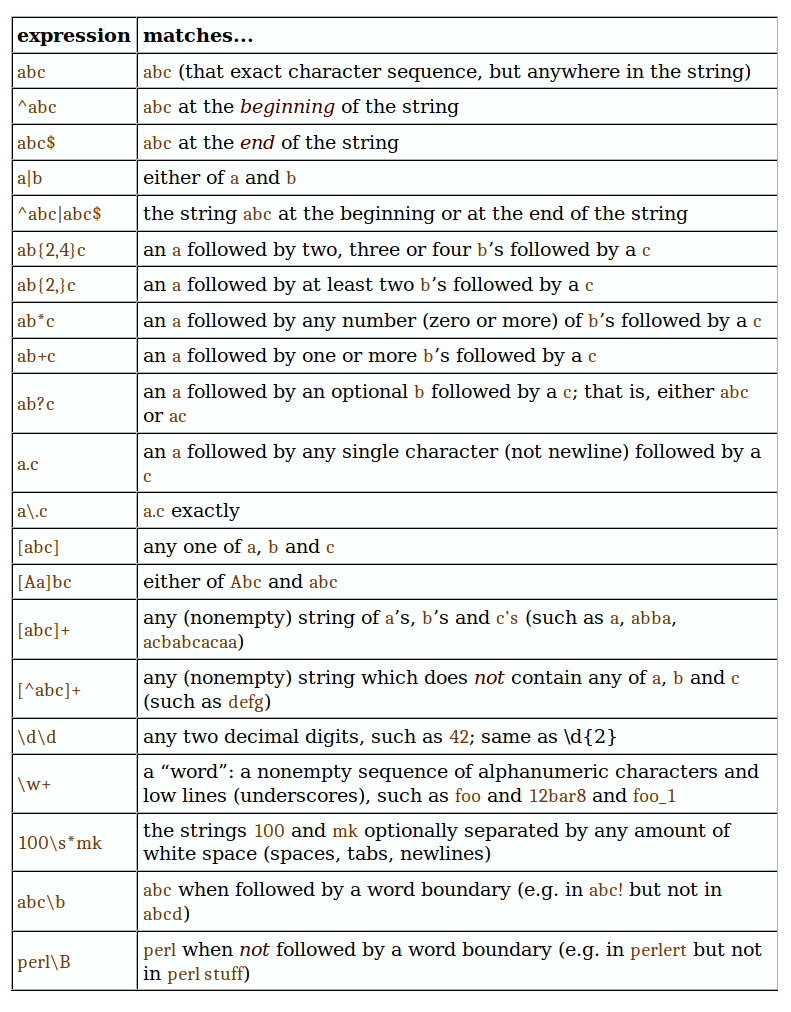Introduction to regular expressions
Regular expressions are a language used to match specific occurrences of strings by following their pattern across the whole string. When a match is found, the resulting matched string will be returned back to user and will be held inside a structure in Python format, such as tuple, list, or dictionary. The following table summarizes the most common patterns in regular expressions:

Also, one of the important rules in regular expressions is you can write your own regex and surround it with parentheses (), which is called the capturing group and helps you to hold important data to reference it later using the capturing group number:
line = '30 acd3.b2c6.aac9 FastEthernet0/1'
match = re.search('(\d+) +([0-9a-f.]+) +(\S+)', line)
print match.group(1)
print match.group(2)Note
PyCharm will automatically color strings written as regular expressions and can help you to check the validity of a regex before applying it to data. Make sure the Check RegExp intention...




































































